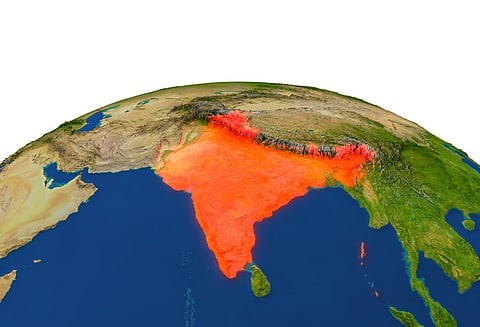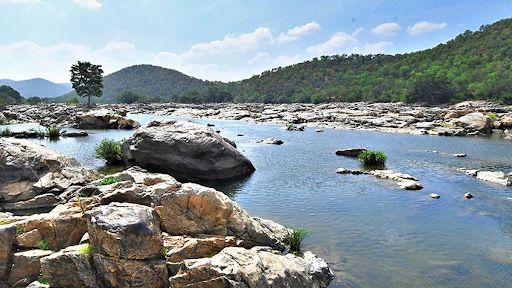




Disclaimer: Copyright infringement not intended.
Amid rising concerns in Northeast India Yimkhiung Tribal Council protest reflects growing resistance among border communities to Government of India rigid national border policies that ignore ancestral, ethnic & social realities.
|
Aspect |
Details |
|
Region |
Kiphire district (Eastern Nagaland) & adjoining regions in Northwestern Myanmar |
|
Language |
Yimkhiungrü language (Sino-Tibetan family); spoken by ~100,000 people |
|
Village Structure |
Clan-based autonomous villages; governed by traditional elders & customary laws |
|
Key Festival |
Tsüngkamnyo Post harvest festival celebrated with dance, feasts & community rituals |
|
Cultural Identity |
Deep oral traditions, ancestral land rituals & strong intergenerational memory |
|
Population Division |
Split by Indo Myanmar border; community exists on both sides with cross border kinship ties |
|
Religion |
Traditionally animist; now largely Christian (Baptist missions prominent) |
|
Main Occupation |
Shifting cultivation (jhum), handicrafts & small scale trade |
|
Recent Protest Issues |
Opposes border fencing & end of Free Movement Regime (FMR); sees it as cultural erasure |
|
Council Representation |
Yimkhiung Tribal Council (YTC) is apex traditional body |
|
Tribe |
Location |
Language Family |
Unique Feature |
Main Council Body |
|
Yimkhiung |
Kiphire (Nagaland), Myanmar |
Sino-Tibetan |
Cross-border community; oral histories |
Yimkhiung Tribal Council (YTC) |
|
Ao |
Mokokchung |
Tibeto-Burman |
Celebrates Moatsu Mong festival |
Ao Senden |
|
Angami |
Kohima region |
Angami–Pochuri |
Historic role in WWII Battle of Kohima |
Angami Public Organization |
|
Sumi (Sema) |
Zunheboto, Dimapur |
Tibeto-Burman |
Known for warrior legacy, harvest festival Tuluni |
Sumi Hoho |
|
Konyak |
Mon district, Arunachal border |
Konyak-Chang subgroup |
Former headhunters; elaborate facial tattoos |
Konyak Union |
|
Lotha |
Wokha |
Western Naga subgroup |
Celebrates Tokhü Emong festival |
Lotha Hoho |
|
Chakhesang |
Phek |
Southern Naga subgroup |
Known for colorful crafts & stone monuments |
Chakhesang Public Org. |
|
Zeliang (Zeme-Liangmai) |
Peren, Manipur |
Zemeic subgroup |
Intermix of Zeme & Liangmai cultures |
Zeliangrong Baudi |
|
Council Type |
Example |
Jurisdiction |
Functions |
|
Apex Tribal Council |
Yimkhiung Tribal Council |
Cultural & territorial jurisdiction |
Custodian of customary laws, rituals, inter-village disputes, protests |
|
Student Union Councils |
Naga Students Federation |
Pan-Naga regions |
Represents youth interests, activism, protest organization |
|
Women's Councils |
Naga Mothers Association |
Nagaland & bordering states |
Gender rights, peacebuilding, social awareness |
|
Elders’ Village Councils |
Varies by tribe |
Local (village) level |
Enforces traditional justice, regulates marriages, land rights |
|
Cross-border Cultural Forums |
Unofficial kinship groups |
Indo Myanmar border tribes (e.g. Yimkhiung) |
Facilitate cross border relations & cultural continuity |
|
Year/Period |
Event/Policy |
Impact on Yimkhiung Community |
|
Pre-2024 |
Free Movement Regime (FMR) in place |
Allowed 16 km (later 10 km) travel without visa; enabled family, trade & culture |
|
February 2024 |
FMR abolished, border fencing announced |
Massive protests; threatens land access, religious practices & kinship bonds |
|
April 2024 |
YTC submits memorandum to Union Government |
Strong opposition to fencing; terms it inhuman & culturally destructive |
|
Long-term Concern |
Permanent division of people/families by artificial line |
Potential humanitarian crisis for Myanmar based Naga kin who depend on India |
|
Aspect |
Details |
|
What is FMR? |
Free Movement Regime (FMR) was an agreement between India & Myanmar that allowed people residing within 16 km (later reduced to 10 km) from border to cross freely between two countries without visas for social, cultural & economic reasons. |
|
Historical Background |
FMR was introduced as part of a border management policy in 1950s to facilitate better cross border interactions considering socio cultural ties between border communities. |
|
Key Features |
Allowed citizens to move freely between India & Myanmar up to 16 km (later reduced to 10 km). |
|
Impact on Communities |
Benefited tribal communities such as Yimkhiung, Konyak & Tangkhul who lived on both sides of border. |
|
Recent Developments |
In February 2024 Indian Government announced termination of FMR. |
|
Yimkhiung Naga Protest |
Yimkhiung Naga community has strongly opposed end of FMR viewing it as an infringement on their cultural, social & economic rights given their shared ancestral land on both sides of border. |
|
Border Fencing Issue |
The construction of a border fence along 1,643 km Indo-Myanmar border particularly in Nagaland is seen by border communities as a disruptive measure that will cut across traditional ties & land ownership. |
|
Government Justification |
The government argues that border fence & end of FMR are measures for national security & better border management. |
|
Key Arguments Against Abolition |
Disrupts familial & cultural bonds. |
|
Future Outlook |
The Yimkhiung Tribal Council (YTC) & other groups demand reconsideration of decision urging policies that respect historical, cultural & socio economic realities of borderland communities. |
For more such articles, please refer to IAS GYAN
Sources:
|
PRACTICE QUESTION Q. Critically evaluate impact of abolishing Free Movement Regime (FMR) on socio cultural & livelihood rights of Indo Myanmar border tribes like Yimkhiung. |







© 2025 iasgyan. All right reserved